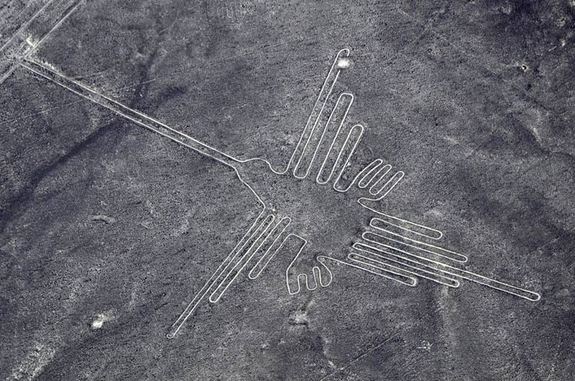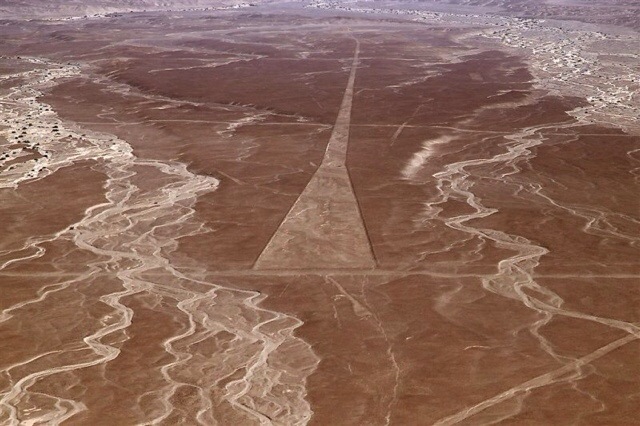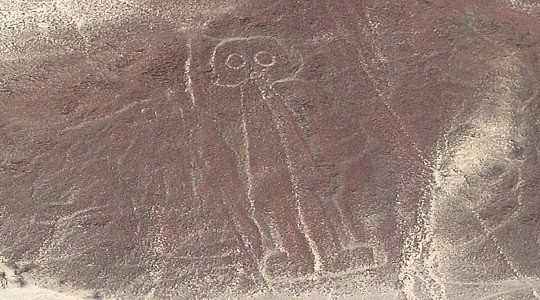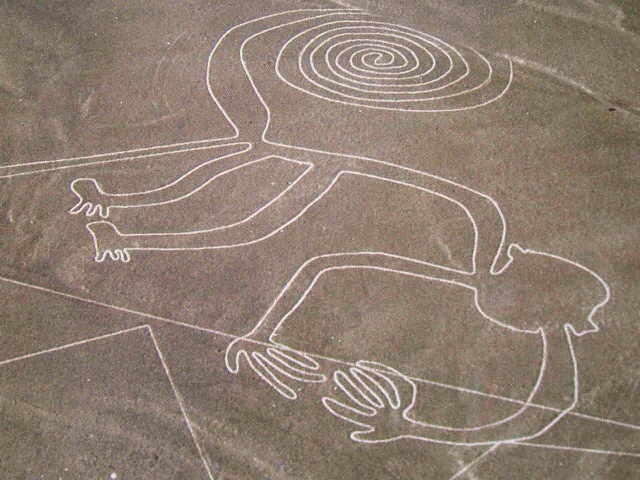
The Nazca (also spelled Nasca) Lines are geoglyphs located in an arid coastal area of Peru that cover an estimated 170 square miles (450 square kilometers).
Scratched on the ground, they number in the thousands and depict creatures from both the natural world and the human imagination. They include animals such as the spider, hummingbird, monkey, lizard, pelican and even a killer whale. Also depicted are plants, trees, flowers and oddly shaped fantastic figures. Also illustrated are geometric motifs such as wavy lines, triangles, spirals and rectangles.
The vast majority of the lines date from 200 BC to 500 AD, to a time when a people referred to as the Nazca inhabited the region. The earliest lines, created with piled up stones, date as far back as 500 BC.
Who made them?
The Nazca people were an ancient prehistoric culture that was successful in using engineering techniques to bring underground water to the surface for irrigation. Some of the theories regarding the purpose of the lines connect them to this need for water.
One of their largest settlements is Cahuachi, a place of ceremony that overlooks some of the lines. It contains more than 40 mounds, including pyramids made of adobe.
When were they “discovered”?
Peruvian archaeologist Toribio Mejia Xesspe was the first to study and report the Nazca Lines in detail after coming across them, on foot, in 1927. In the 1930s as air traffic in the area increased, the lines became better known, eventually attracting a steady stream of tourists.
It’s often stated that the lines can only be seen from the air; however, this is a myth. A 2007 study that looked at 1,500 drawings in the Palpa region found that “each and every geoglyph” can be spotted from the ground.
Theories and significance
The purpose of the lines continues to elude researchers and remains a matter of conjecture. Ancient Nazca culture was prehistoric, which means they left no written records.
One idea is that they are linked to the heavens with some of the lines representing constellations in the night sky. Another idea is that the lines play a role in pilgrimage, with one walking across them to reach a sacred place such as Cahuachi and its adobe pyramids. Yet another idea is that the lines are connected with water, something vital to life yet hard to get in the desert, and may have played a part in water-based rituals.
In the absence of a firm archaeological conclusion a number of fringe theories have popped up, such as the idea that the Nazca people used balloons to observe the lines from up high, something which there is no archaeological evidence for.

Alien Runway?

Alien Space Man ?

More strange lines

Originally posted 2013-12-08 22:02:28. Republished by Blog Post Promoter

![nazca-lines-hummingbird[1]](https://coolinterestingnews.com/wp-content/uploads/2013/12/nazca-lines-hummingbird1.jpg)











